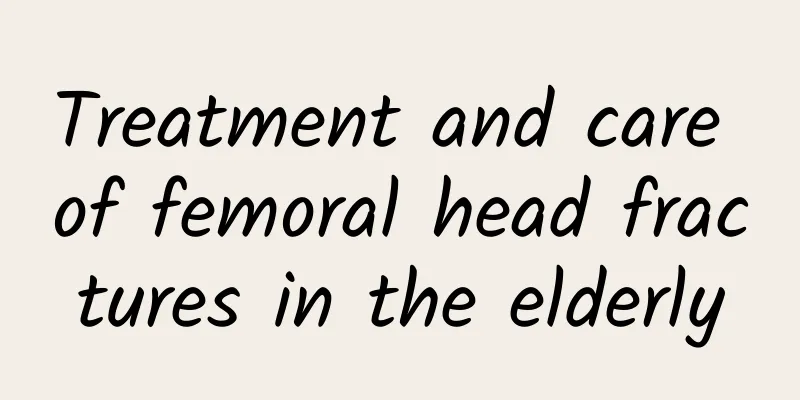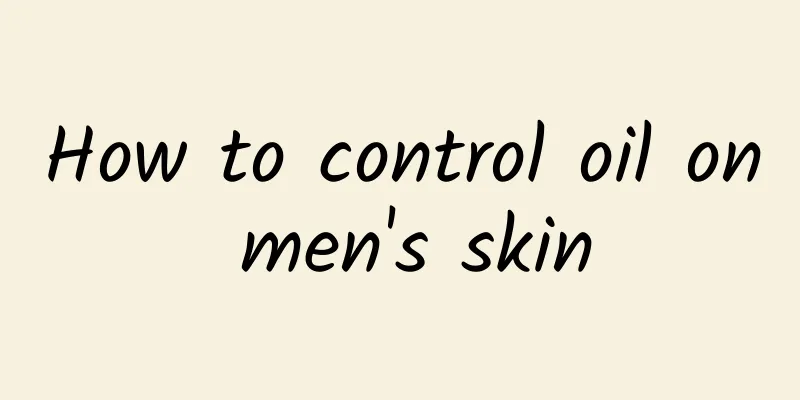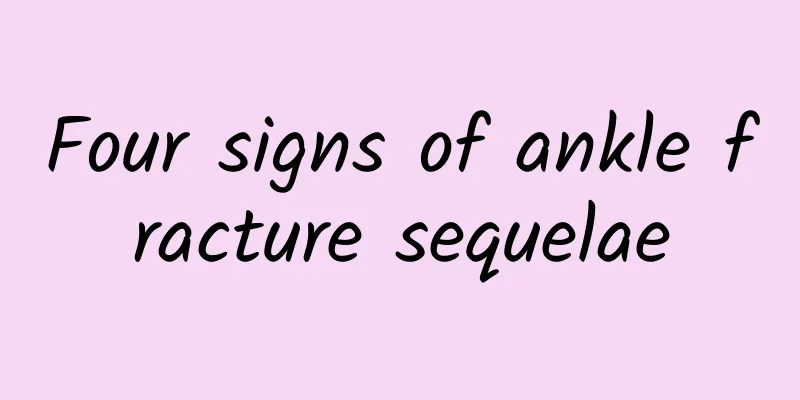Treatment and care of femoral head fractures in the elderly

|
Femoral head fractures are common in the elderly. This is because the hormone levels in the elderly decrease, the absorption and metabolism of nutrients are poor, and they are prone to osteoporosis, which makes the bones of the body fragile. How should we care for femoral head fractures in the elderly? 1. Treatment methods 1. Traction reduction: Suitable for patients with poor financial ability, poor physical condition, extremely old age, who cannot tolerate surgery or are unwilling to undergo surgery. 2. Traction reduction and multiple pin internal fixation: It is suitable for femoral neck fractures in patients under 65 years old. Although there is a 20%-40% incidence of femoral head necrosis, there is still a chance to undergo artificial joint replacement surgery. 3. Artificial femoral head replacement: Suitable for elderly patients over 70 years old who have multiple complications and poor ability to carry out daily activities. 4. Total hip replacement: Suitable for patients aged between 65 and 75 years old, in good health, and with an expected survival period of more than 10 years. 2. Nursing methods 1. Massage the patient's sacral and coccyx pressure areas with safflower oil every 2-4 hours to prevent bedsores. 2. Wear a cloth shoe with a horizontal wooden board nailed to the heel of the affected limb. The long axis of the wooden board is parallel to the foot of the bed and perpendicular to the shoe. It is also called a "T" shoe. Keep the affected limb in a neutral position to prevent external rotation of the foot. Pad the heel with cotton to prevent heel compression. 3. Encourage patients to drink plenty of water to prevent urinary stones; eat more vegetables and fruits to prevent constipation; eat easily digestible foods rich in protein and vitamins, such as broth, fish, eggs, milk, soy milk, etc., to promote fracture healing. 4. Pay attention to adjusting the room temperature, add or remove clothes for the patient in time to prevent colds; often help the patient to sit less; tap the back gently and encourage the patient to cough actively to avoid phlegm accumulation in the lungs and pneumonia. 5. Teach the patient to perform static contraction exercises on the thigh and calf of the affected limb, and also give appropriate massage to prevent muscle atrophy. 6. Encourage the patient to do some self-care activities, such as eating, drinking, combing hair, washing face, etc. Clean the perineum in time after urination and defecation, replace contaminated bed sheets in time, and maintain a good mental state of the elderly to accelerate the healing of fractures. 7. After 3 months, the patient can help the elderly to walk with the help of crutches. After half a year, the patient can move around indoors without crutches. After one year, the patient can go to the hospital for a follow-up examination and removal of the nails. |
<<: What are the symptoms of hypoglycemia and how to prevent it?
>>: Coccyx fracture symptoms and treatment
Recommend
How can men lose weight?
For many friends, obesity may be a big tear point...
How can men improve their sexual function?
Men's sexual function is related to the harmo...
Introduction to exercises that are good for the prostate
The prostate is a very important organ in the hum...
What medicine is good for male tinea groin
Tinea cruris is a common bacterial infection in d...
Prostatic cystic nodules
We often hear that many people develop prostate d...
Why do men have cold hands?
Compared with men, women are more likely to have ...
At what age does a man's sexual function begin to decline?
Sexual function is everyone's instinct. Only ...
What are the methods of contraception for men?
What are the methods of contraception for men? Th...
What causes right lower abdominal pain in men?
As men, there are also many problems. I wonder if...
Where is the correct location of Baihui acupoint? How to massage Baihui acupoint
High blood pressure"text-indent: 2em; text-al...
What are the treatments for hydrocele?
If hydrocele of testicles is not effectively trea...
What are the benefits of eating Centrum for men?
What are the benefits of taking Centrum? In many ...
Sperm chromosome examination items
Sperm chromosomes affect the physical characteris...
What to do if male prolactin is too high
High prolactin levels in men can cause great harm...
Do you remember how it felt when you had your first kiss?
Men, can you still remember your first love? Can ...









